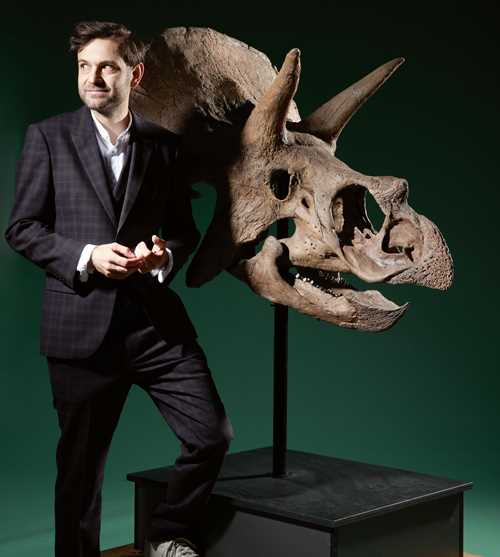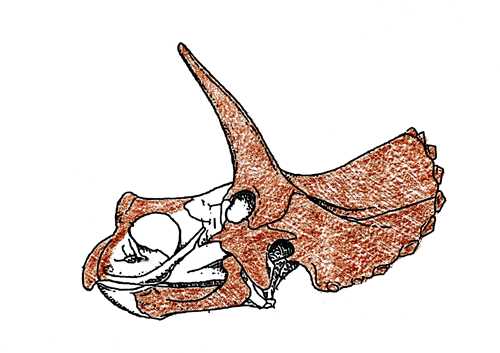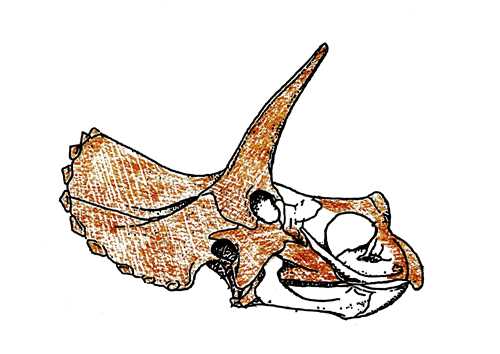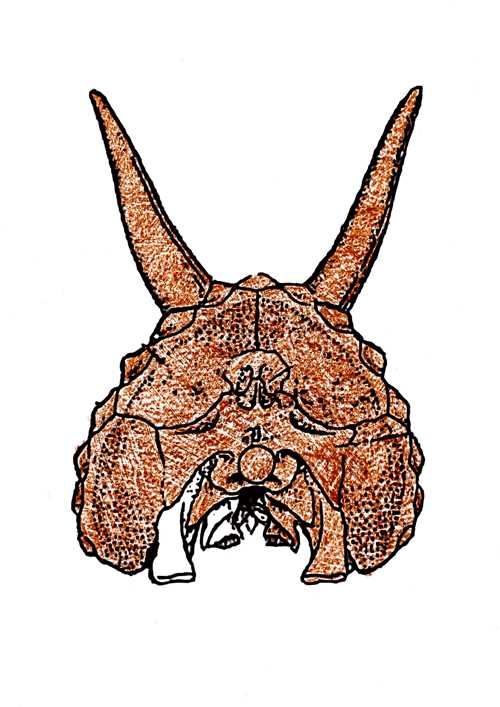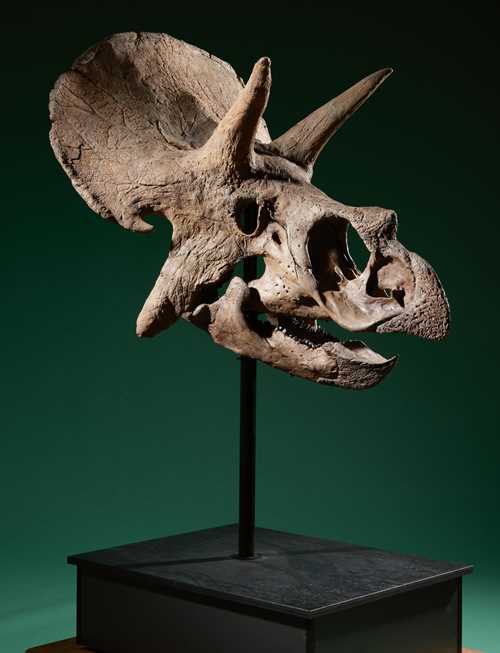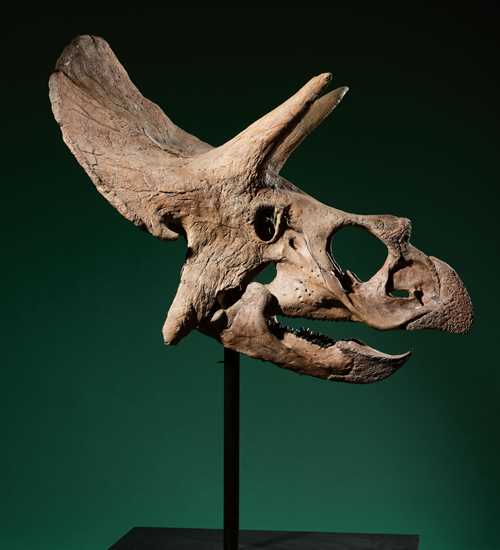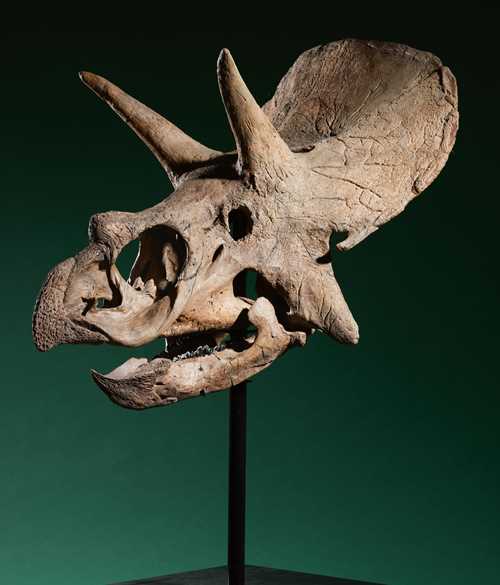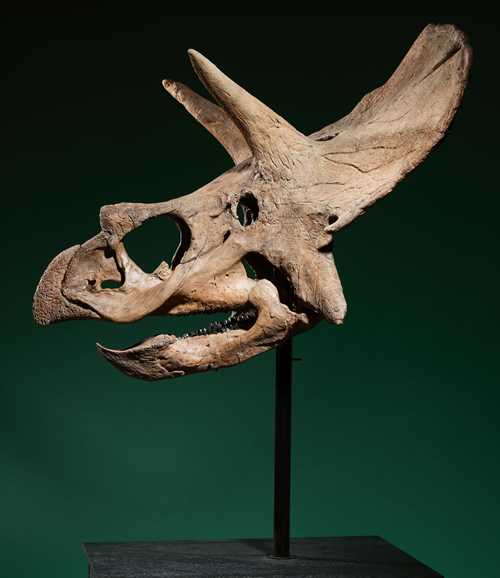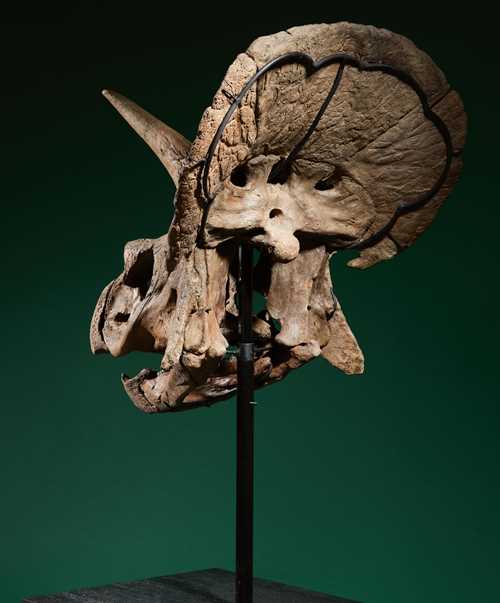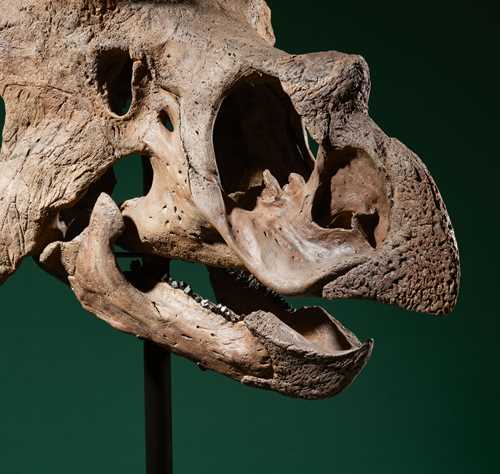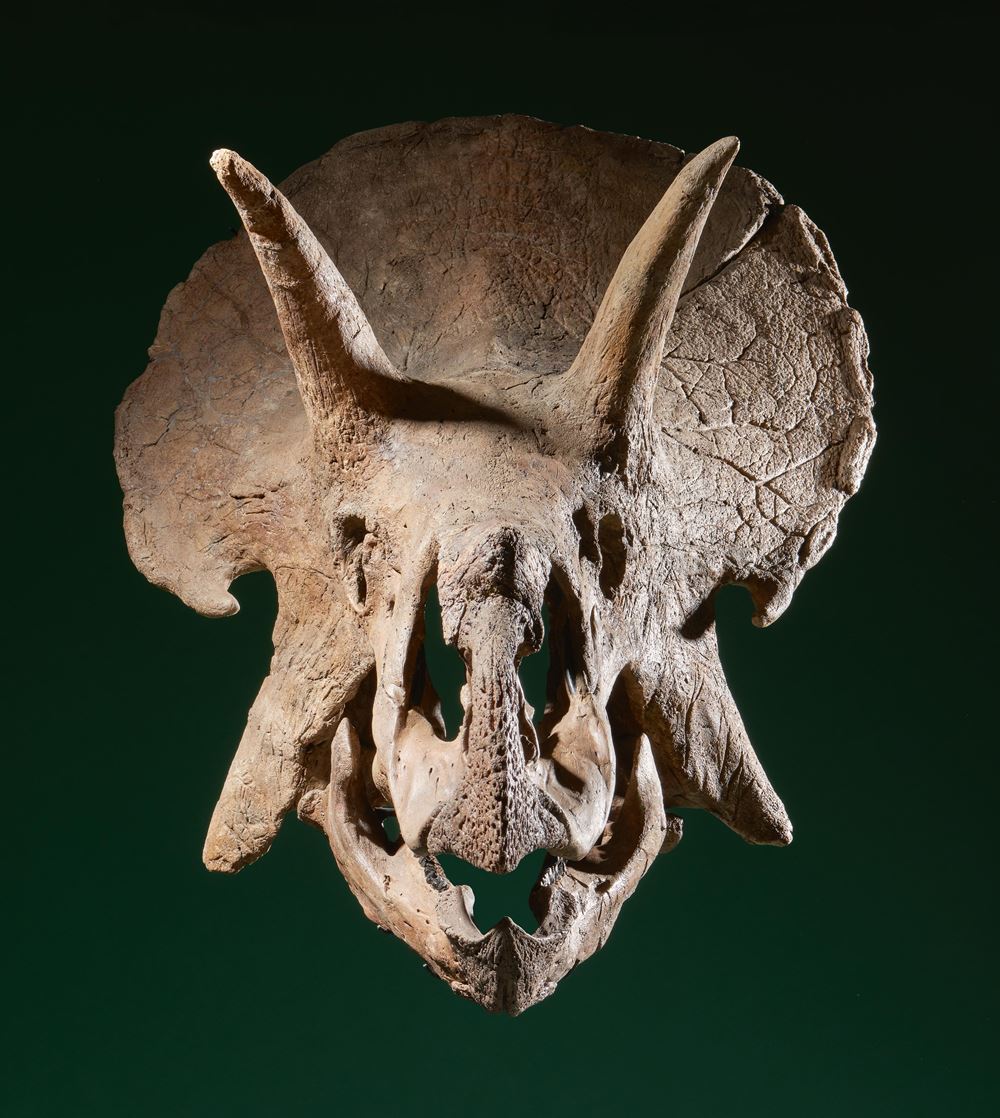
Lot 873* - A207 Out of This World - Monday, 04. December 2023, 04.00 PM
CALLISTO'
THE TRICERATOPS
Stoddard Ranch, Lance Creek Formation, Wyoming
Discovered: 2020
Excavated: 2021
Original bone mass: 74%
125 cm (frill to beak)
100 cm (length)
93 cm (height)
165 cm (hight on stand)
Triceratops horridus
Owing to its formidable triad of cranial horns and giant bony frill, the Triceratops, scientifically named for its 'three-horned face,' ranks among the most iconic dinosaurs globally. Despite their imposing appearance, the long-held belief that these horns primarily served defensive purposes has recently come under scrutiny, with emerging hypotheses proposing their potential roles in intraspecific courtship and dominance displays.
This species of Triceratops was initially unearthed in 1886 by John Bell Hatcher in the region of Wyoming. Taxonomically classified within the Ceratopsidae family, its characteristics include beak-like morphology, rows of shearing dentition at the posterior jaw, elaborate nasal horns, and the presence of an extensive bony frill extending posteriorly and dorsally.
Triceratops vs. T. rex
Found in the area of eastern Wyoming in the Hell Creek formation, Triceratops shares its origin with the most famous dinosaur of all time – the Tyrannosaurus rex!
In the field of paleontology, the simultaneous presence of Triceratops and T. rex in various fossil-rich sites has prompted discussions about the frequency of their fierce interactions. While there is substantial evidence indicating that Triceratops was a favored prey item for T. rex, it's important to recognize the defensive capabilities of Triceratops, thanks to its distinctive cranial weaponry, featuring those iconic three-pointed horns.
The skull that we are very proud to present here, features slender, pointed brow horns and a small nose horn, indicating it belonged to a juvenile Triceratops horridus — an exceedingly rare find within the paleontological annals. Triceratops fossils are usually solitary finds, often without any signs of nearby mates. This has led to the notion that Triceratops might have spent much of its life as a lone ranger, rather than traveling in large herds for protection.
Most of the time, Triceratops remains consist of just the skull, with various cranial bones scattered over a wide area. This is likely due to scavenging after their demise. This makes the discovery of smaller, juvenile specimens with their delicate bones an exceedingly rare event in the world of palaeontology.
Quality, Assembly and Preparation
The bone quality of this specimen is excellent, with rich texture and a beautiful chocolate-brown colour. Allmost all of the important parts were recovered, including both brow horns and the nose horn complete with its beak. Also recovered were one maxilla, one almost complete jaw and most of the large frill. Of special note are the beautifully visible suture lines and blood vessels on the frill.
Based on a volumetric evaluation, an estimated 75% of the skull is original.
The complete process of specimen restoration, in its entirety, was executed through a laborious fusion of manual craftsmanship and cutting-edge three-dimensional modeling techniques. These restorations are based on a detailed osteological evaluation of form and size and through comparison with previously mounted specimens.
It is noteworthy that the realisation of this endeavour required a significant amount of preparation work, spanning nearly a full year, which was entrusted to the craftmanship of two accomplished palaeontologists. The culmination of their work resulted in this superlative piece, which artfully synthesises the realms of science and natural artistry.
'Dinosaurs are the gateway to science, which is the gateway to technology, which is the gateway to the future.'
Palaeobotanist Kirk Johnson, head of the Smithsonian National Museum of Natural History
To see this Object in a Video, click here
CHF 300 000 / 500 000 | (€ 309 280 / 515 460)
Sold for CHF 450 000 (including buyer’s premium)
All information is subject to change.


